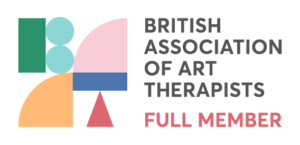Applications of art therapy for adult mental health: Art Therapy is used in treatment and support to the diagnosis of mental disorders in the adult population.
The spectrum of treatable psychopathology in Art Therapy is as broad as these, from psychoses to the psychoneuroses, personality disorders, drug addiction, depression, disorders, eating disorders, etc.
Using images patients can distance themselves from their conflicts and as a mirror, reflected in a non-threatening way.
The appropriateness of the use of Art Therapy as a therapeutic modality will depend not so much pathology as the specific circumstances of each patient, their level of disturbance, the potential for significant relationships, the ability to express and reflect on own emotions, and obviously the will of the patient to engage in a therapeutic process in which the creation of images is an important factor.
Psychotherapy for art or Art Therapy is practiced in individual sessions and in groups.
Treatments can be short, medium, or long term depending on whether the work is of containment, focusing on the conflict, intrapsychic or interpersonal exploration.
The versatility of Art Therapy allows it to carry out important work in different health care environments.
The acute psychiatric unit, can serve to counteract the adverse emotional effect involved in the patient in a hospital admission, as immediate effect decreases the level of anxiety while facilitating communication between patients and the staff of the clinical team.
Once out of the hospital, the possibilities of Art Therapy are multiplied. At the Day Hospital can help patient and medical teams to explore the causes that provoked the crisis and thus preventing crises by helping the patient to find alternative means to express their conflicts.
At the Day Center, Art Therapy can be useful to patients as well as to think creatively on the staff of each situation individually.
In the treatment of less severe psychopathies, with patients who tend to distance themselves from their feelings, overly intellectualizing his or her conflicts, Art Therapy can help the patient to establish contact with his or her emotional world without compromising their defensive strategies.
Metaphorical images used in the spoken language are not permanent while visual images, even after they are made, maintain emotional and communicative power.
This feature allows the Art Therapist to wait for the right time to review an image that refers to particular conflict, which is when the patient is prepared to deal with it and not before.
Articles are protected by copyright laws. We ask that if you use them that they are cited properly.
Author:
Carles Ramos i Portas
Director of Art Therapy at Metàfora
carles.ramos@metafora.org
You might also be interested in reading:







